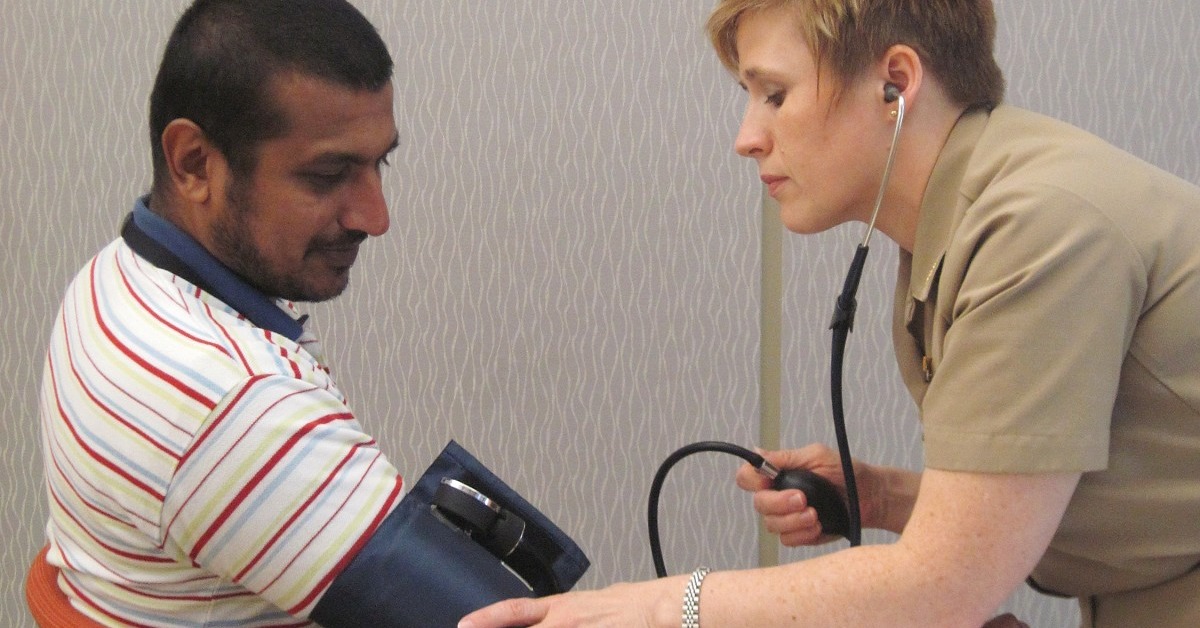
What Does a Family Nurse Practitioner Do?
Family nurse practitioners perform most of the same tasks as [...]

America is aging: older Americans today make up a greater proportion of the population and are living longer than ever before. That trend should only continue in decades to come.
While Americans are generally living healthier lifestyles than their predecessors, older individuals still require more extensive healthcare services than their younger counterparts. They’ll demand professionals expert in the unique healthcare needs of the aging. Enter adult gerontology nurse practitioners (AGNPs). These master’s-level-educated professionals accrue the years of experience, licensure, and specialized training needed to serve senior citizens.
Elderly patients require a range of health screenings, lab work, and x-rays that monitor areas of concern, common among aging individuals, including:
Licensed practical nurses and registered nurses can assist in elder care by:
What they can’t do is make diagnoses, analyze test results, or write prescriptions. These duties fall to medical doctors (MDs), physician assistants (PAs), and advanced practice registered nurses (APRNs), whose ranks include nurse practitioners (NPs).
Elder patients with chronic illnesses and other complications can get the treatment they require from adult gerontology nurse practitioners (AGNPs). AGNPs undergo high-level training at the master’s level to gain the advanced knowledge and expertise to properly assess and treat older patients. That level of training typically results in higher income. How much do adult gerontology nurse practitioners make? This article addresses that question and also discusses:
An adult gerontology nurse practitioner (AGNP) provides primary care and acute care health services to individuals aged 13 years and older (although their training specializes in conditions that typically impact older patients). AGNPs fall under the advanced practice registered nurse (APRN) category, through which they can perform many of the same functions as medical doctors (MDs) without oversight, depending on the state in which they practice.
The American Association of Nurse Practitioners (AANP) reports that more than 355,000 licensed NPs practice nationwide. Most NPs have certifications as family nurse practitioners (FNPs).
Nurse practitioners (NPs), a subgroup of advanced practice registered nurses (APRNs), have three scopes of practice: restricted, reduced, and full, depending on the state in which they deliver services. NPs with full practice authority perform similar tasks as physicians, mostly under private practice.
The NP role evolved over the years as a response to address a shortage of primary care physicians. The Association of American Medical Colleges projects that by 2034, there will be a shortage of between 17,800 and 48,000 primary care physicians and between 21,000 and 77,100 non-primary care physicians.
As the US population ages and chronic diseases become more prevalent, health insurance coverage, including Medicare, has expanded. To meet the growing need, nurse practitioners have become the second-largest segment of primary care providers.
Nurse practitioners perform the following advanced functions:
Patient care support staff typically consists of licensed practical nurses (LPNs) and registered nurses (RNs) who handle daily routine patient care functions and follow the treatment plans developed by the nurse practitioner or physician.
Adult gerontology nurse practitioners provide two forms of care: primary and acute. Adult gerontology primary care nurse practitioners (AGPCNPs) assess, diagnose, treat, and manage common health problems for patients as early as 13 years old, through adulthood, and into their senior years. Though some practitioners focus on adolescents, most concentrate on elderly patients. AGPCNPs work in some of the following settings:
AGPCNPs work closely with patients, families, and primary caregivers, educating them on preventing long-term complications through proper health management, early detection, and preventative health screenings.
While AGPCNPs focus on preventative and curative care, adult gerontology acute care nurse practitioners (AGACNPs) manage more complex situations, treating existing illnesses, developing treatment plans, and prescribing medications. AGACNPs often work in fast-paced environments such as emergency rooms, intensive care units, trauma units, or inpatient and outpatient clinics.
The National Center for Chronic Disease Prevention and Health Promotion (NCCDPHP) reports that six in 10 adults in the US have a chronic disease, and four in 10 have two or more chronic conditions. The top diagnoses treated by AGACNPs are hypertension, heart failure, and diabetes.
Depending on the state, AGNPs can operate autonomously and perform advanced functions without oversight from a physician. However, AGNPs work collaboratively with physicians, nurses, and other healthcare professionals, providing patient care and treatment in varied settings.
The average base salary for adult gerontology nurse practitioners (AGNPs) is $100,656; the top 10 percent earn over $117,000 annually, according to Salary.com. Salary ranges vary depending on education, certifications, years of experience, and location. For instance, according to the US Bureau of Labor Statistics (BLS), the top-paying states for nurse practitioner are:
California metropolitan areas like San Jose, Napa, San Francisco, Sacramento, and Fresno boast average salaries ranging from $147,760 to $197,870 for nurse practitioners. The cost of living in these cities could take away from your earnings. Nonmetropolitan locations in the northern mountains and north coast parts of California and areas in Minnesota, Georgia, and Connecticut may be more affordable; they pay annual salaries ranging from $128,980 to $136,510.
Skills and experience play a factor in wages. Payscale reports that AGNPs with skills in wound care, diagnosis and treatment planning, acute care, and geriatrics may realize a significant pay boost. Likewise, AGNPs with experience managing more junior AGNPs could increase their chances of earning higher salaries.
Currently, only seven percent of NPs have certifications in adult gerontology primary care and less than three percent in adult gerontology acute care. The American Association of Colleges of Nursing (AACN) aims to incorporate geriatric-focused courses into bachelor’s degree programs to prepare nursing students as early as their undergraduate studies to provide patient care to the aging population.
AGNPs function as advanced practice registered nurses (APRNs); a master’s degree from an accredited nursing program and an AGNP certification are prerequisites in this practice. In addition, some APRNs earn a Doctor in Nursing Practice degree (DNP).
From your bachelor’s degree to your master’s degree and certification exams, becoming an adult gerontology nurse practitioner (AGNP) takes approximately nine years from start to finish. Here are the steps along the career path for aspiring AGNPs working in primary or acute care:
Although becoming an AGNP takes time and dedication, there will be a demand for nurse practitioners with experience working with elderly patients as the population ages. Equipping yourself with advanced education, hands-on clinical experience, and certifications could increase your earning potential.
.
Questions or feedback? Email editor@noodle.com

Family nurse practitioners perform most of the same tasks as [...]

Family nurse practitioners provide many of the same services as [...]

Neonatal nurse practitioners earn solid six-figure salaries, but their greatest [...]

You need to have an RN license and have several [...]
Categorized as: Nurse Practitioner, Nursing & Healthcare